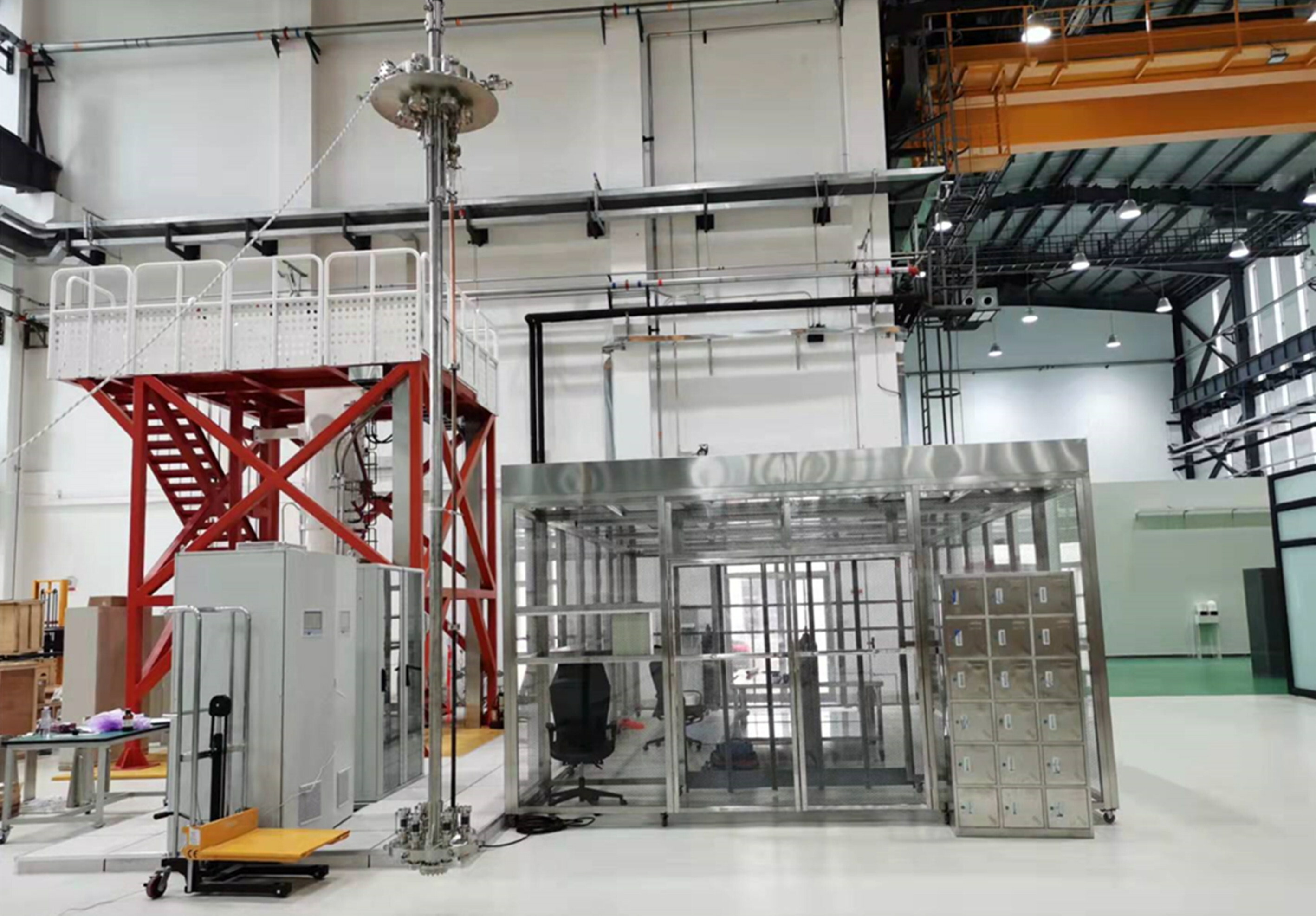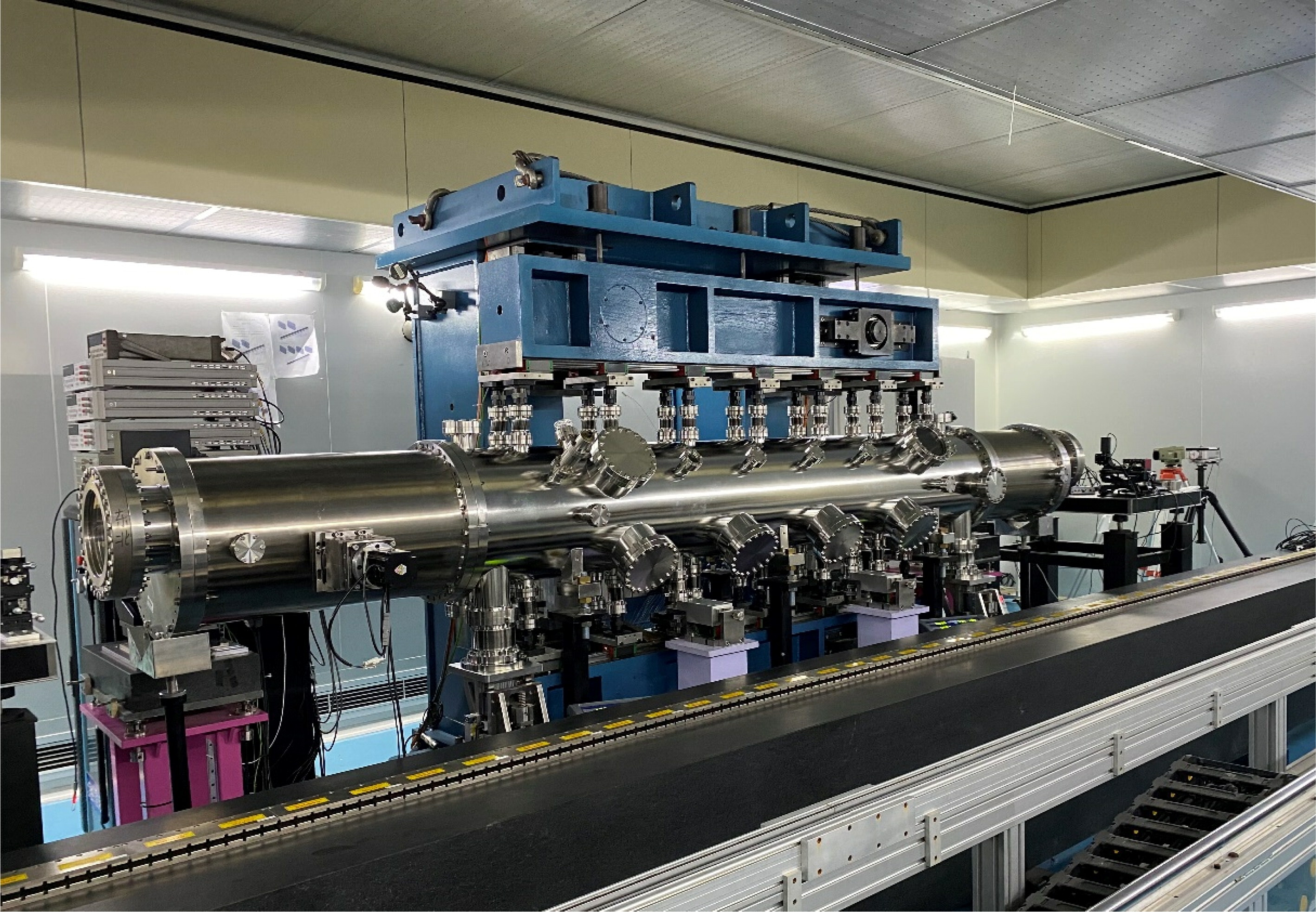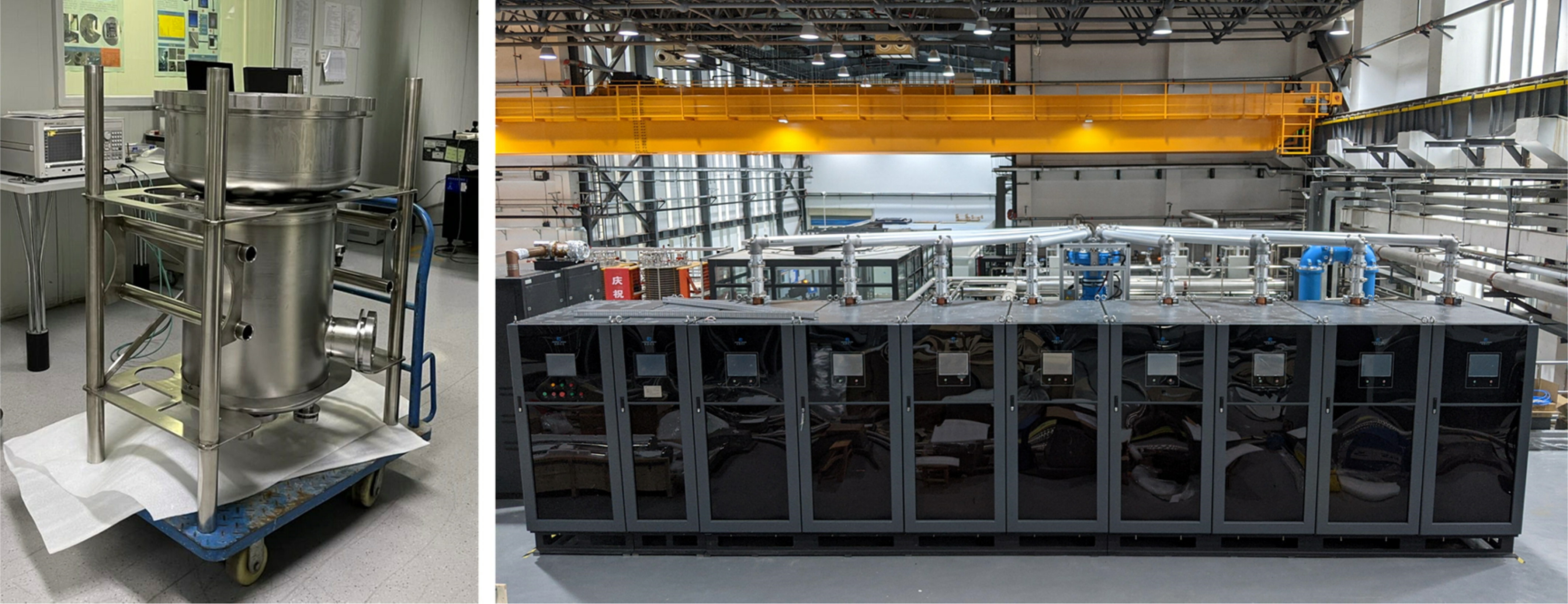Figure 1: The HEPS building complex. The circumference of the largest ring building is around 1500?m. The extension buildings from this ring will contain three long beamlines. Inset is the logo of the HEPS, reflecting its magnifier design.
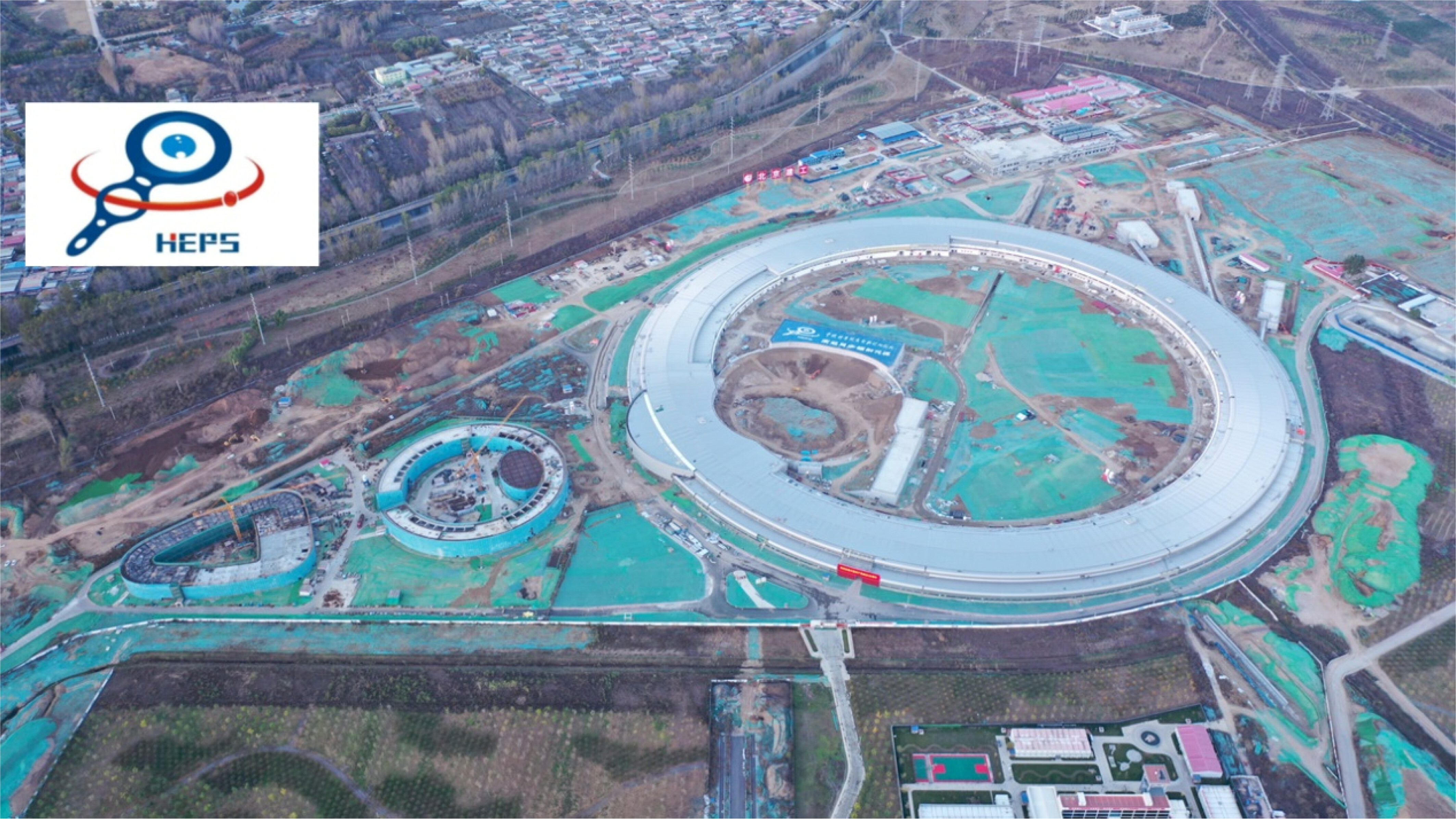
The goal for the emittance of HEPS is less than 60?pm rad. In order for the ground buildings to house the accelerator and beamlines of this 4th-generation 6?GeV machine, earth was evacuated 4?m deep. It was refilled with plain concrete to form a stable slab. The preliminary vibration measurement result of this huge concrete slab has been positive, and the buildings housing the three long beamlines in Phase I are also taking shape.
As a result of engineering challenges involving the accelerator components, the storage ring lattice and injector design were modified and frozen. Numerous prototypes were tested, validated, and launched into production. Manufacturing of pre-series components began, including accelerating structure, pulse compressor, magnet girder, RF solid-state amplifier, 166.6?MHz superconducting RF cavity, digital BPM processor, vacuum chambers, photon absorbers, and vacuum instruments. The pre-series manufacturing of magnets is underway for the high-gradient quadrupoles, dipole-quadrupoles, sextupoles, octupoles, and fast correctors. Following the successful validation of pre-series equipment, production of the main series of components for HEPS started.
Tremendous progress was made in 2021 on the procurement of the accelerator components for the HEPS’ storage ring, booster, and LINAC (). All booster magnets have been completed and 75% of them have been measured. Most types of storage ring magnets have been prototyped and 25% of the sextupoles have been measured. The setup of a Non-Evaporable Getter (NEG) coating for the massive storage ring vacuum chambers has been built, and some NEG coating testing runs are already done ().
Six types of insertion devices were designed for the Phase I beamlines. The manufacturing of the in-air Insertion Devices (IDs) is nearly done, after assembly and factory acceptance testing, and magnetic tuning was scheduled (at press time) to start soon. The mass production of the in-vacuum IDs, including Cryogenic Permanent Magnet Undulators (CPMUs) and In-Vacuum Undulators (IVUs), is in progress. The prototype 166.6?MHz 260?kW RF solid-state amplifier has recently passed its acceptance tests (), while the series production of the 499.8?MHz 100?kW solid-state amplifiers () has been launched. The prototype low-level RF control system has been successfully tested.
There are 15 beamlines in Phase I, 14 of which are intended for user operation and the last one for test measurement. Three long beamlines will be constructed, with the longest one (350?m) designated for an X-ray imaging beamline. Beamline optical design has been finished.
Coherence Analysis Toolbox (CAT), a self-developed code, performs wave optic simulations of nanoprobe and coherent beamlines (). It enables higher accuracy and efficiency by using a multi-layer singular-value decomposition method. In addition, CAT can provide experiment simulation, such as Coherent Diffraction Imaging (CDI). A multi-lamellar method based on dynamical theory of X-ray diffraction and finite-element analysis (FEA) was proposed and applied to evaluate the performance of the bent Laue monochromator with distortion induced by heat load and bending twist. We also developed a general numerical framework for X-ray diffractive optics based on the Takagi–Taupin (TT) dynamical theory with a general integral system of the TT equations formed for the FEA. The framework is promising in evaluating diverse X-ray optical elements, such as multilayer Laue lenses, multilayer mirrors, and bent crystals.
Figure 6: Schematic of the experimental hutch and instrumentation for the nanoprobe beamline, one of the feature beamlines in Phase I, reflecting high-resolution mode (HRM) with multilayer Laue lens (MLL) and in-situ mode (ISM) with Wolter mirror (V) + Elliptical mirror (H) as nano-focusing optics.
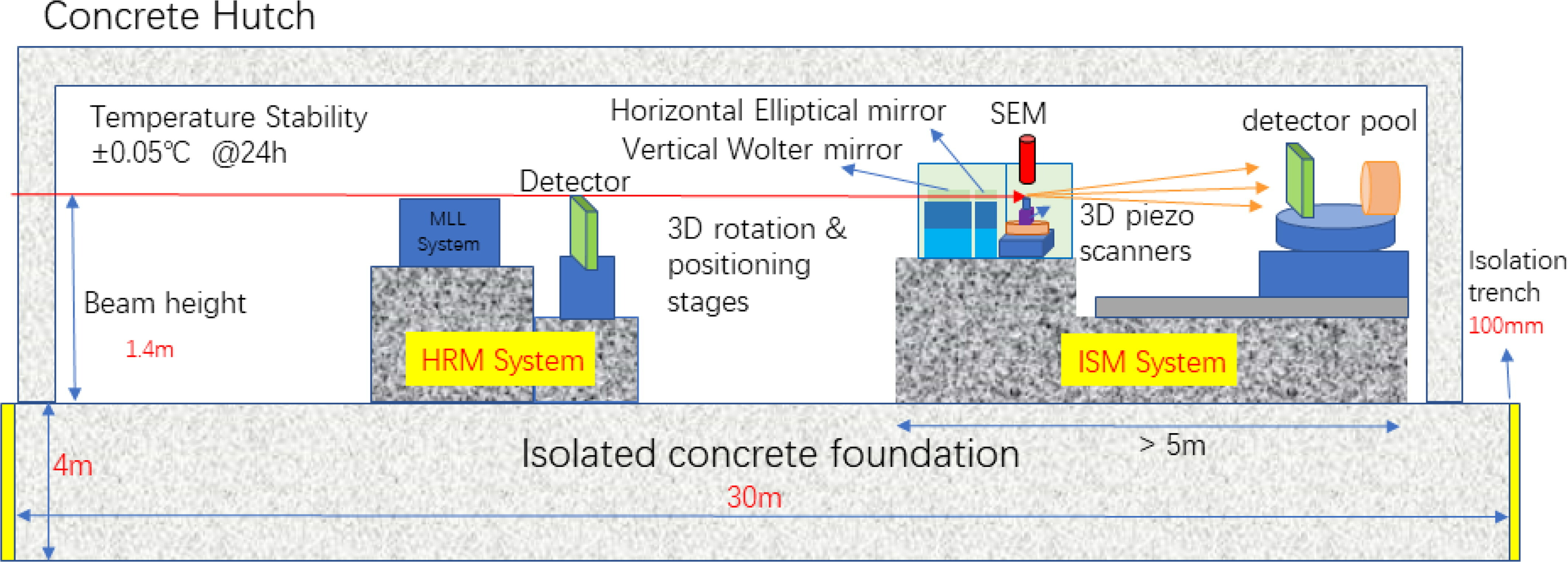
With the optical design finished, the procurement for X-ray optics has begun. Meanwhile, the experimental station design is under way. Part of the liquid nitrogen cooling monochromators and the mirror systems are being developed in-house. Procurement and manufacture of the components have started.
HEPS’ construction encountered the impact of the Covid-19 pandemic just 7 months after its start in 2019, but the impact was contained and the project schedule will not change. After internal decoration of the storage ring tunnel and the beamline buildings, the installation of the storage ring and the beamlines is scheduled to begin in the summer of 2022. The first light of HEPS is expected to shine in 2024.n
IHEP, Chinese Academy of Sciences, Beijing, China


